It’s a very competitive market out there these days, especially in the B-segment, where the cars are bigger than ever, with prices that have never been lower.
The sub-RM100k buyer has never had it this good in terms of choice. Outside the default “Big 3” (that’s the Nissan Almera, Toyota Vios and Honda City), Naza provides two well-kitted hatchbacks – one Korean (Kia Rio), one French (Peugeot 208). The facelifted Ford Fiesta, available in both hatch and sedan, is another popular urban choice, while the Honda Jazz Hybrid is a green and practical option. Even VW is now in the game with the CKD Polo Sedan and Polo Hatch.
Faced with such stiff competition, a newcomer will need a strong unique selling point for it to rise to the surface and stay afloat. The Mitsubishi Attrage you see here has one pretty convincing USP in the season of inflation – outstanding fuel efficiency that will save you money at the pumps. 21 km/l, they say.
Challenge accepted. We put Mitsubishi’s New European Driving Cycle claims to the test with a journey from KL to Ipoh, plus another few hundred kilometres of the daily grind to see what else the Attrage has to offer.
It is understandable if you approach manufacturer fuel economy figures with scepticism. We generally take them with a pinch of salt too, especially when it’s usually near impossible to replicate the claims in real world driving. Mitsubishi Motors Malaysia begs to differ. The company is confident that 21 km/l isn’t just theoretical, but practical as well, so they organised a drive to Ipoh for us to challenge the Attrage.
The eco challenge started at MMM’s headquarters in Subang, where we got on the NKVE heading north. It was then straight all the way, before exiting at Tambun and joining the lunch traffic in Ipoh’s Old Town.
Two up, air con speed and temp set at the middle points, highway cruising speed ranging between 70 to 100 km/h (no coasting in neutral), no driver change (stop and start = less efficient), an allocated time of three hours (which we used to the max) and a feathery right foot combined for 24.19 km/l. Did we gain from driving a manual? The winners of the challenge did 24.7 km/l in a CVT, so no.
Yes, we bettered the combined score of 21 km/l, but it has to be qualified that our route was mostly highway with just a small portion of city traffic, and it was a conscious effort to be light-footed, cruising below normal highway speeds to maintain a consistently low rpm.
A constant 110 km/h cruise with occasional overtaking wouldn’t have delivered such spectacular results, but it was a test to prove what’s possible with some willpower. And we’re not talking about extreme hypermiling.
After achieving what’s possible, we set out to do something more probable. Another stint with the Attrage CVT over a couple of working days (normal routine, mixed driving with jams, including one trip to Sepang and back) returned 365 km for my 20 litres of RON95, which is equivalent to 18.25 km/l – better than expected, and more surprising than the aforementioned best efforts.
To put that in context, 18 km/l is better than a mixed cycle in my own hybrid car. Yes, I’ve been gentle with the Attrage’s throttle, but that’s what driving an economical car does to this writer – an extra 0.1 km/l is a “Yes!”, achieving the next 1 km/l is a victory. That’s what driving an eco car is all about, isn’t it?
Luckily, the media drive route from Ipoh to Penang gave us a chance to get out of eco mode and get our horns out. The back roads off the PLUS highway between Kuala Kangsar and Bukit Merah served up a good mix of high speed sweepers, narrow hill twisties and lumpy surfaces, a good cocktail of a road to test the Attrage dynamically.
The Attrage is softly sprung, and the long travel suspension gave it a somehwat loping gait over the dips and crests that peppered our B-road section. There’s no hiding the body roll, but the overall performance was more composed from behind the wheel than what it would have looked like to a spectator. The Attrage is an honest little car in terms of handling, and it’s easy to drive it hard.
Grip was surprisingly good. We were expecting squeals of protest from the tyres in a few tight corners, only to find dogged determination to hold line. Upon closer inspection, were were surprised to find sporty Bridgestone Potenzas (S001, 185/55 R15) on this eco car!
The steering channels a decent amount of feel to your palms, and the turning circle is superb, but the trade off is that it’s a little slow. Not the sharpest helm in class, too. Ride comfort is good, but the Attrage would have chalked up a more solid impression had low speed bumps been dealt with less noisily.
It was pedal to metal (literally) for the entire stretch, so it was good that we were in the manual. When power is limited, it’s good to have control and timing in your hands, and that was the case here. The M/T’s clutch is light and the whole gearshift process is rather vague, but this trait is typical of stick shifters in budget cars. No excuse for the cheap and ‘designless’ gear knob, though.
With two on board, we would say that the 80 PS/106 Nm 1.2 litre MIVEC engine has adequate reserves for a fast drive, although one must be prepared to rev out every ounce from those three pots, which in itself is a fun and rewarding activity in a modestly powered car. High speed stability isn’t the best in class, though.
Both points in the above paragraph are connected to the Mitsu’s lack of weight – at just 875 kg for the M/T and 905 kg for the CVT, the base Attrage is lighter than a Lotus Elise! It’s no rocket science – with less weight to haul, one can get away with a small engine with a matching appetite for fuel.
The CVT wouldn’t have been fun on that particular stretch, but in every other situation, on any other day, its smooth and easy character shines through. A progressive right foot is the seamless gearbox’s best ally; likewise, sudden and big stabs at the throttle will elicit a noisy protest. The smooth and comfy overall experience led to thoughts of a “junior Nissan Sylphy”, which we mean as a compliment.
Driving the Attrage over a few days meant that we noticed a few quirks that didn’t surface in the cross-state dash. It could have been an isolated case, but the test car’s idle wasn’t perfectly smooth – throbbing can be felt through the brake pedal (subsides when gear lever is pushed to N), which is slightly at odds with the drivetrain’s general manners.
Nitpicking further, radio signal from the 2-DIN Kenwood head-unit was poor, and while rear legroom is very good – with plenty of room under the front seats for feet to tuck under – rear headroom isn’t as generous. It’s obvious that the Attrage isn’t a wide car, and three abreast is a tight affair at the back. It isn’t cramped by any means, but some rivals boast more space.
The Attrage, in our tester’s fully-loaded SE spec, is very well equipped. There’s the abovementioned touch screen head unit with reverse camera, entry is keyless with a push start button, and the AC is digital auto, but it still manages to feel somewhat basic inside. I suspect that it’s due to the very conventional design and layout of the dashboard.
On the plus side, the generous amount of strorage spaces, including a tray above the glove box, is much appreciated. I also like wing mirrors that auto-fold when the car is locked.
Taking a few steps back for the bigger picture, the Mitsubishi Attrage is a unique entry in this segment, a true eco car that delivers great FC without costing hybrid money. We’re looking at a minimalist approach to making an eco car here, and it’s refreshing. The economy claims are real and achievable, and for those who care more for km/l than km/h, the Attrage is an attractive proposition.
For more on the Attrage, read our review of the Thai-spec car as well as our local launch report.
Looking to sell your car? Sell it with Carro.




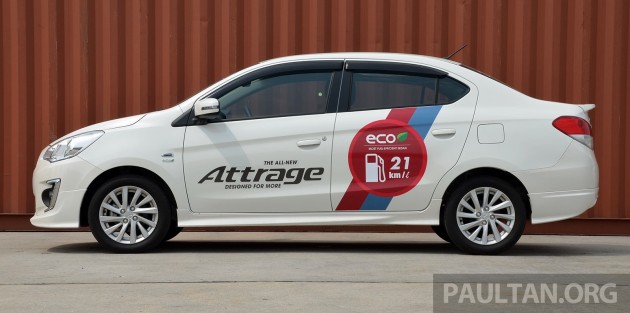
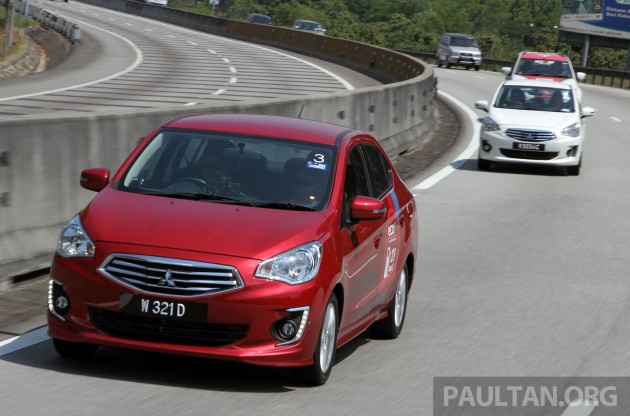
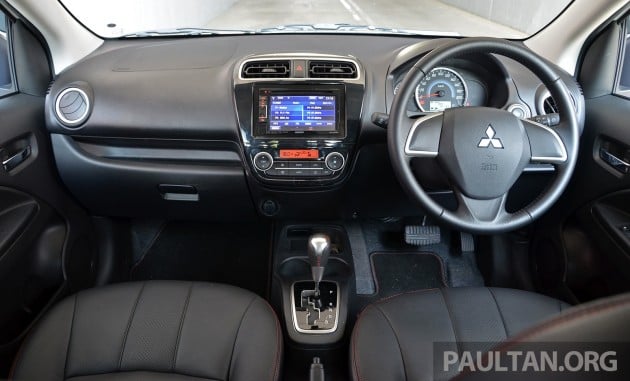




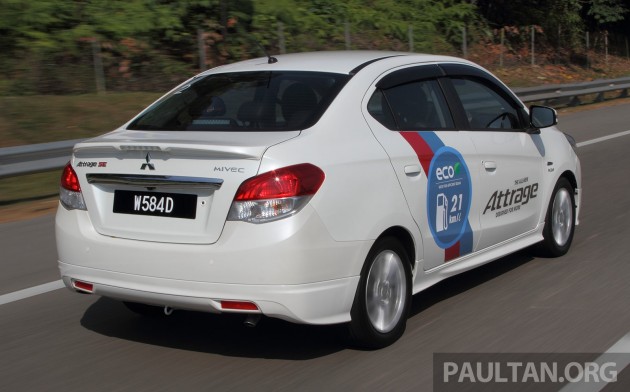

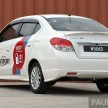
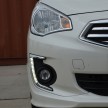


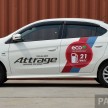
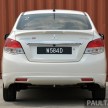
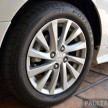
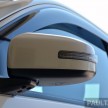
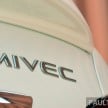
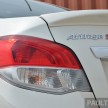
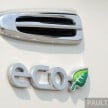
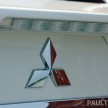
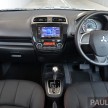
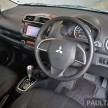
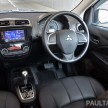
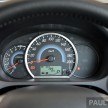
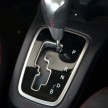
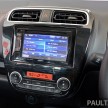
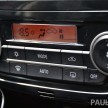
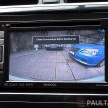
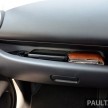
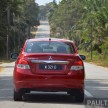
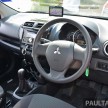
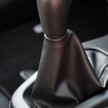

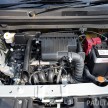
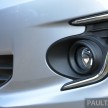
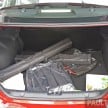

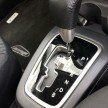
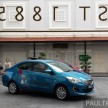
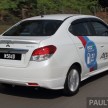
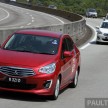

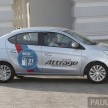
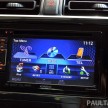
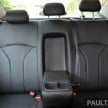
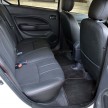
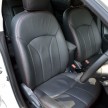












AI-generated Summary ✨
The comments generally praise the Mitsubishi Attrage for its impressive fuel economy, with many achieving around 18-21 km/l, especially on highway runs, making it a cost-effective choice for daily commuting despite some concerns about engine power and body roll. Several users note the car's spacious interior, modern digital features, and decent safety equipment, although some highlight rough sound insulation and body roll in aggressive driving. Comparisons to other small cars like the Suzuki Swift and Proton models reveal that many see the Attrage as a good value, especially considering its affordability and fuel efficiency, though a few express reservations about its appearance, handling, and rear seat comfort. Overall, the sentiment is positive about its fuel economy and features, with some moderating comments about its practicality and minor shortcomings.